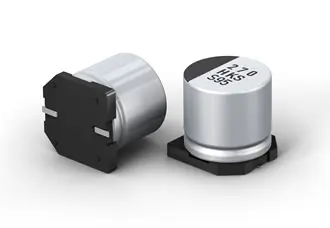source: Electronics Specifier article
Saving space and increasing system reliability, Panasonic Automotive & Industrial Systems announces a series of miniaturised, cost-effective, aluminium electrolytic capacitors. The FKS series devices feature an increase in capacitance of up to three times when compared to Panasonic’s most popular FK series in the same can size.
For example, the 25V 33µF FKS capacitor, which comes in a 4×5.8mm can size, uses just 62% of the space of previous-gen parts. In fact the highest capacitance achieved by FK series in a 4×5.8mm can is 10µF: one of the new parts can replace three of the FK devices.
Dr. Martina Ciacchi, Head of the capacitor team in Europe, Panasonic, commented: “By increasing the capacitance density we simplify our customer’s design, enabling a reduction in parts count and therefore we increase the design reliability. Additionally, the FKS series features a price decrease of about 10% when compared to an FK product with the same capacitance value.”
Panasonic is launching 25 new part numbers in the FKS series aluminium electrolytic capacitor family this quarter, in voltage classes between 6.3 and 50V and capacitance range from 33 to 1,800µF. Can sizes vary from 4×5.8 to 10×10.2mm. Target markets include industrial automation, automotive, power management, audio and white goods.































